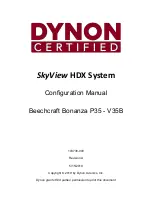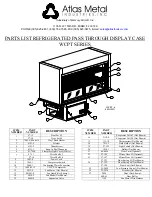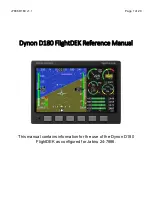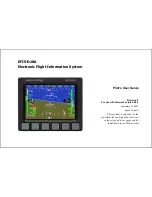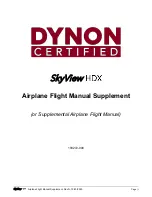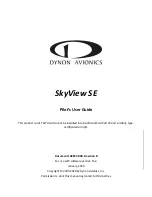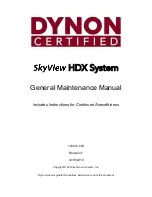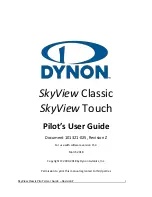
89000046-014
KSN 780/8XX/900 AeroNav AML STC Installation Manual for Helicopters
Rev 0
Page 5-1
© Honeywell International Inc. Do not copy without express permission of Honeywell.
5. Mechanical Installation
This section will describe the physical mounting of the AeroNav XXX in the aircraft.
Aircraft installing the AeroNav XXX for VFR use only, as defined in Section 2.4.1, can install the
AeroNav XXX unit in any location easily accessible to the pilot. However, the AeroNav XXX installation
must not introduce any new hazards related to other aircraft or systems controls, displays or
instruments. All other installations must follow the guidance below.
5.1 Equipment Location – New Installations
If the AeroNav XXX is used for IFR navigation, course deviation information and navigation
annunciation must be installed in the Pilot’s Primary Field of View (FOV). IFR certification using this
equipment will require separate installation approval and follow guidance appropriate to he aircraft
category and crew requirements.
5.1.1 Course Deviation Indicator
The course deviation information must be located in the Pilot's Primary Field of view if the AeroNav
XXX is used for navigation. Installation of a CDI/HSI requires a separate installation approval.
5.1.2 Instrument Panel Cutout
The AeroNav 880/900 and AeroNav 780/800 tray is designed to be installed on the backside of the
instrument panel. The instrument panel requires either a 6.320" x 4.600" or 6.320" x 2.70" hole for
the AeroNav 880/900 or AeroNav 780/800 respectively. If the instrument panel in the aircraft is
considered primary structure, additional installation approval will be required for the instrument
panel cutout. The installer is responsible to ensure the structural aspects of this installation meet the
requirements of AC 43.13-2B, Chapter 11, Paragraph 1104(a).
5.1.3 Requirements for Tray Installation
The BendixKing Tray must be installed in the aircraft as described below in order to satisfy the
structural requirements for the STC. Deviations to these requirements will require separate approval.
1.
Rear Tray Support (Instrument Panel)
a.
The existing instrument panel must be fabricated from 2024-T3
aluminum with a minimum thickness of 0.050". The tray brackets
must be fabricated from 3/4" x 3/4" x 1/16" 2024-T3 aluminum
angle extrusion for mounting the tray, as shown in Figure C - and
b.
If new components are fabricated, the fabrication methods must
follow the requirements of FAA Advisory Circular 43.13-1B,
Chapter 4 for general airframe fabrication criteria, including hole
tolerances, edge distances, rivet spacing, and corrosion
protection, and Advisory Circular 43.13-2B Chapters 2 and 11 for
structural adequacy.
2.
Forward Tray Support
a.
The BendixKing Tray must have forward support brackets,
reference Figure C - 1 or Figure C - 2. The forward support brace
must be 0.032” 5052-H32 aluminum. (Note: equivalent or
stronger is acceptable)































